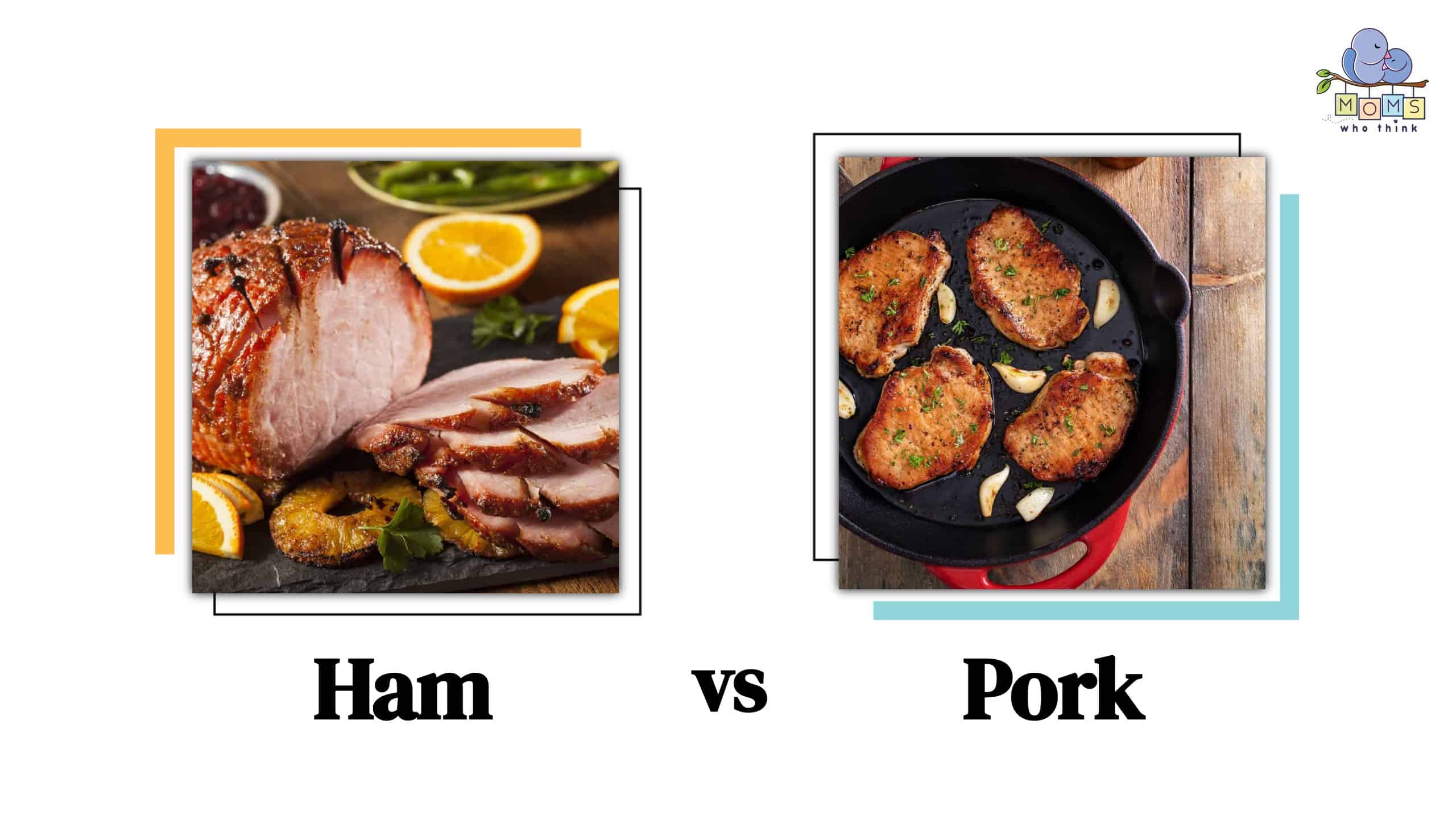Ham and pork are foods you hear pretty often, but what are they? They are types of meat from a similar animal, i.e., pig, yet utterly different in several ways. They look, taste, and feel different; their preparation method also varies. A significant variance between ham and pork is that ham is a particular cut of pork, specifically from the pig's thigh. On the other hand, pork is meat from any part of a domesticated pig. Though ham and pork may be related, the terms aren't interchangeable.
We'll expound more on ham and pork below.
Ham vs. Pork: What are their Differences?
We've established that ham is pork, but pork isn't ham. Several characteristics distinguish them from each other despite them being from pig meat.
Ham is a cut of pork meat from the thigh of the hind leg. The meat is usually cured and salted, meaning it's gone through smoking, curing (wet), or brining (dry) to preserve it. It's also ready to eat, so cooking isn't necessary. Pork is raw meat from any area of a domesticated pig's body. Unlike ham, it is uncured, and you must cook it before eating.
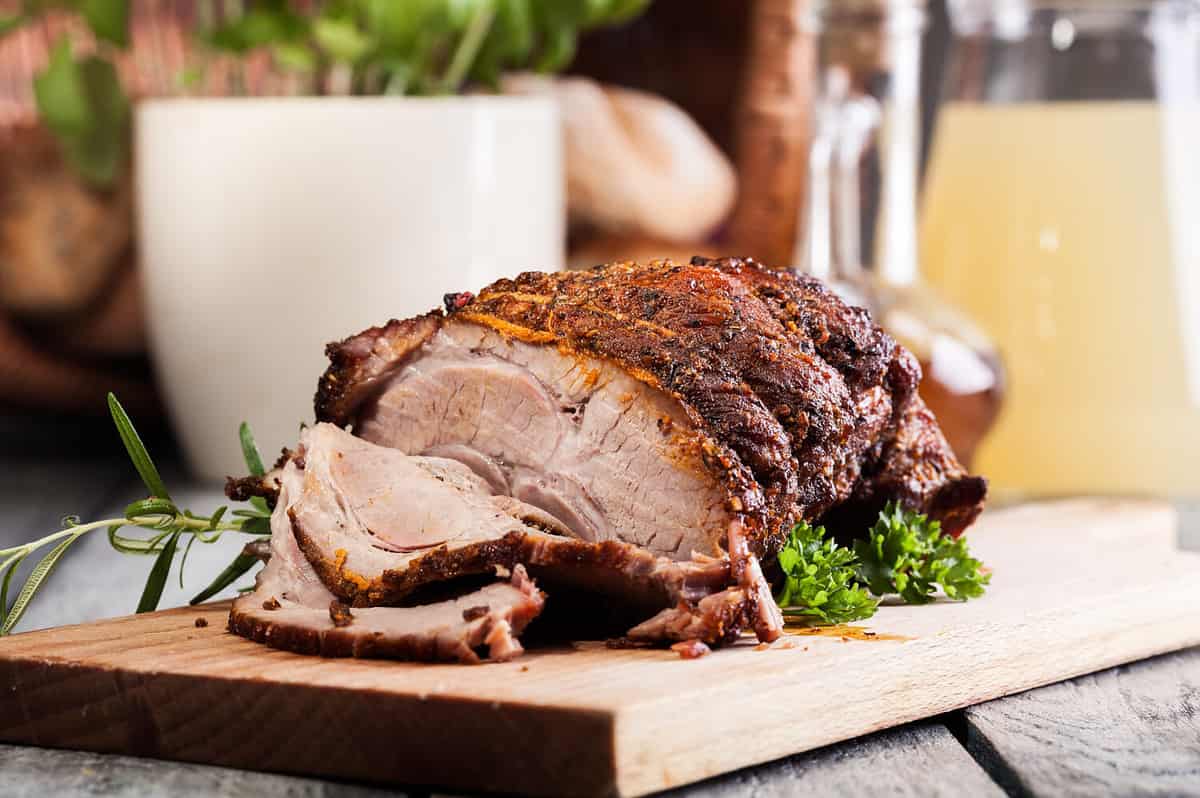
Pork shoulder is easy to slice, much like a piece of ham.
©Slawomir Fajer/Shutterstock.com
Color is another crucial difference between ham and pork. Pork is usually pale pink or a slightly darker pink when raw, depending on the cut part of the pig. Lean pork meat, like tenderloin, is light pink, while a fatty cut, like pork butt, is darker. Ham has a deep pink color on the inside due to curing, while the exterior has glazing with traces of red and orange.
- The must-have convenient reference guide for every home cook!
- Includes more than 8,000 substitutions for ingredients, cookware, and techniques.
- Save time and money on by avoiding trips to grab that "missing" ingredient you don't really need.
The taste and texture of either ham or pork go hand in hand. The curing process in ham affects how it tastes and feels. It appears moist and much more tender than other pork cuts. Some pig parts give drier and chewy cuts, but generally, ham feels softer. Pork is neither cured nor cooked. It, therefore, has a mild flavor that allows creativity in terms of sauces, spices, marinades, and rubs. But note that fatty cuts are more flavorful, so you may want to make that your next order. Due to the brining and smoking, ham has a salty and smoky flavor. You can outdo or match this taste with proper seasoning, but ham is tastier than pork.
The shelf life of ham and pork varies. Ham preservation begins with the curing process. It is put in a combination of sugar, salt, and other components to help it last longer and give it its flavor. It lasts longer than raw pork, but having it in the fridge for about one week is good. Though ham can last a while, freezing for too long isn't the best idea. Once thawed, ensure to eat it within one or two months.
It's best to cook raw pork on the same day of purchase. If not, it can stay in the fridge for three days, after which you need to cook it. Alternatively, you can have it in the freezer for up to 12 months without any effects.
How you prepare and consume ham and pork differs. First because of the state they are in when buying, and second, the ability to use seasoning. You can readily eat ham after buying in its cold state or when hot. It goes well with some recipes where you can add spices of choice and heat to bring out its flavor and make it much softer.
As for pork cuts, you need to cook them, and their preparation is very flexible. There are cuts you can cook using any method, while others are specific. Pork is suitable for grilling, roasting, pan-searing, braising, smoking, or baking. The mild flavor and low sodium content allow you to add any seasoning you choose.
Ham vs. Pork: How Different Are They Nutritionally?
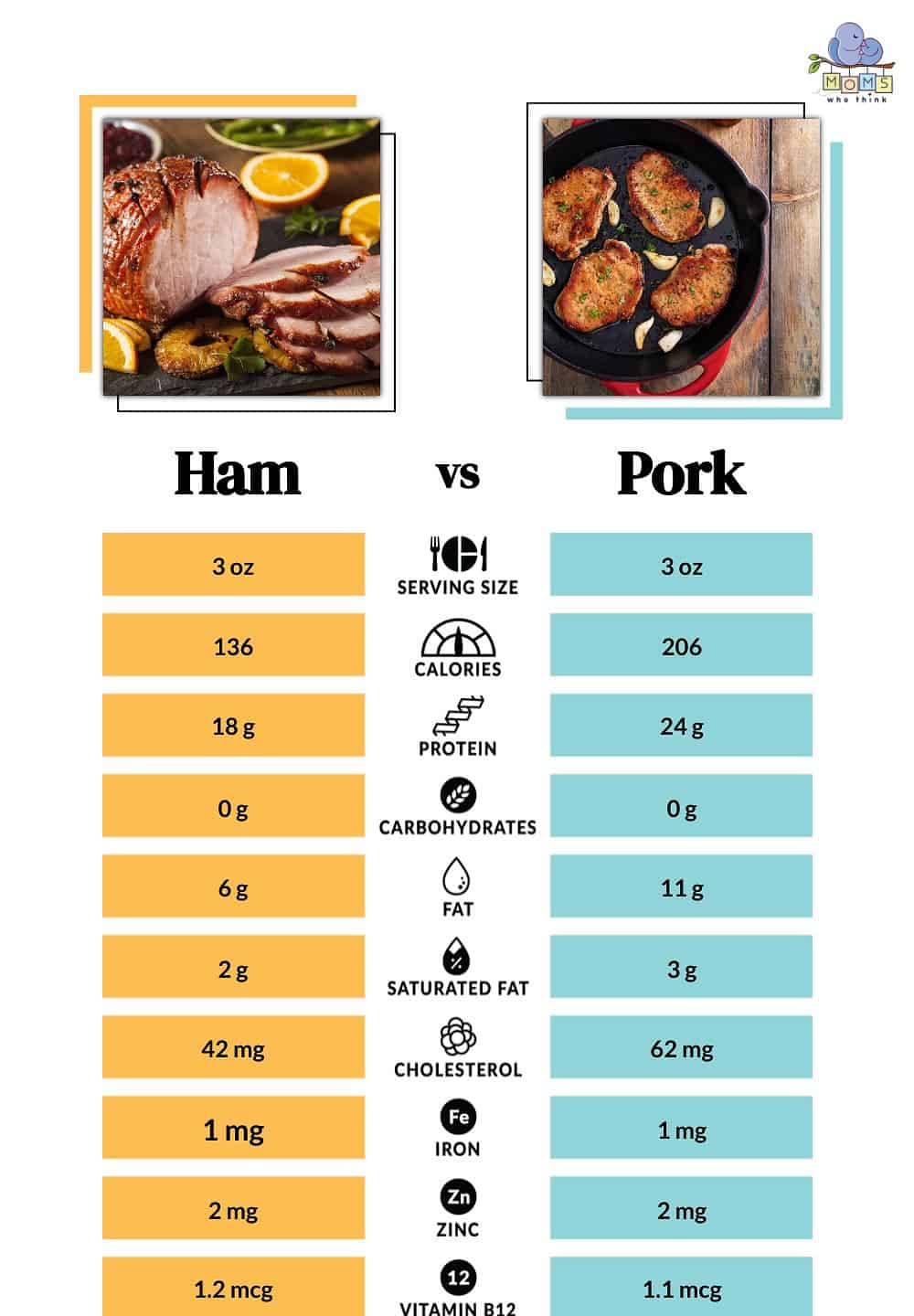
The nutritional content of pork and ham is pretty similar. They are excellent protein sources, but pork has a higher percentage than ham. Pork has more calories and fat than very lean ham. Both products have saturated and unsaturated fats, which are undoubtedly higher in pork despite the pig part the cut is from. They also have high amounts of B complex vitamins, for example, Vitamin B1, B2, B3, B5, B6, and B12. However, they are more in pork cuts than ham, but the levels are still good for the body.
Pork and ham have minerals like selenium, phosphorus, iron, zinc, and sodium. All except sodium are high in pork than in ham. The reason for this is the curing procedure administered to ham during processing. It's usually soaked in salty water, which causes the sodium level to increase. The sodium is something to watch out for when seasoning ham, so it's not too salty.
What is Ham?
Ham is one of pork's most recognizable cuts. Its versatility makes it favorable to people in different ways. You can use it on sandwiches or dinner recipes, depending on how you want to enjoy it. You will find a variety of ham in stores.
Cured Ham
Cured ham is the most popular. As the name suggests, it's cured to preserve it using salt, sugar, water, and other curing ingredients. The process also gives it a distinct taste and texture. Cured ham comes in two forms, i.e., dry and wet cured ham.
Dry-cured ham, e.g., prosciutto, is seasoned with a salt and spice mixture and air-dried for some months. The resulting ham usually has a dry, firm texture and salty taste. Wet-cured ham is drenched in a brine solution with seasoning but salt, sugar, and curing agents. The process makes it moist and softer than the dry-cured ham, and its flavor is mild. An example is honey-baked ham.
Fresh Ham
Fresh ham, or green ham, as some people call it, is uncured or smoked ham. Unlike cured ham which is ready to eat, this one is raw, and its flavor is much milder. There are various ways to prepare it, like braising, grilling, or roasting.
Whole Bone-In Ham
Most ham comes sliced, but the whole bone-in ham comes whole hence the name. It's available in fresh or cured form but bone-in. The bone-in helps to enhance the flavor and adds moisture to the ham when cooking.
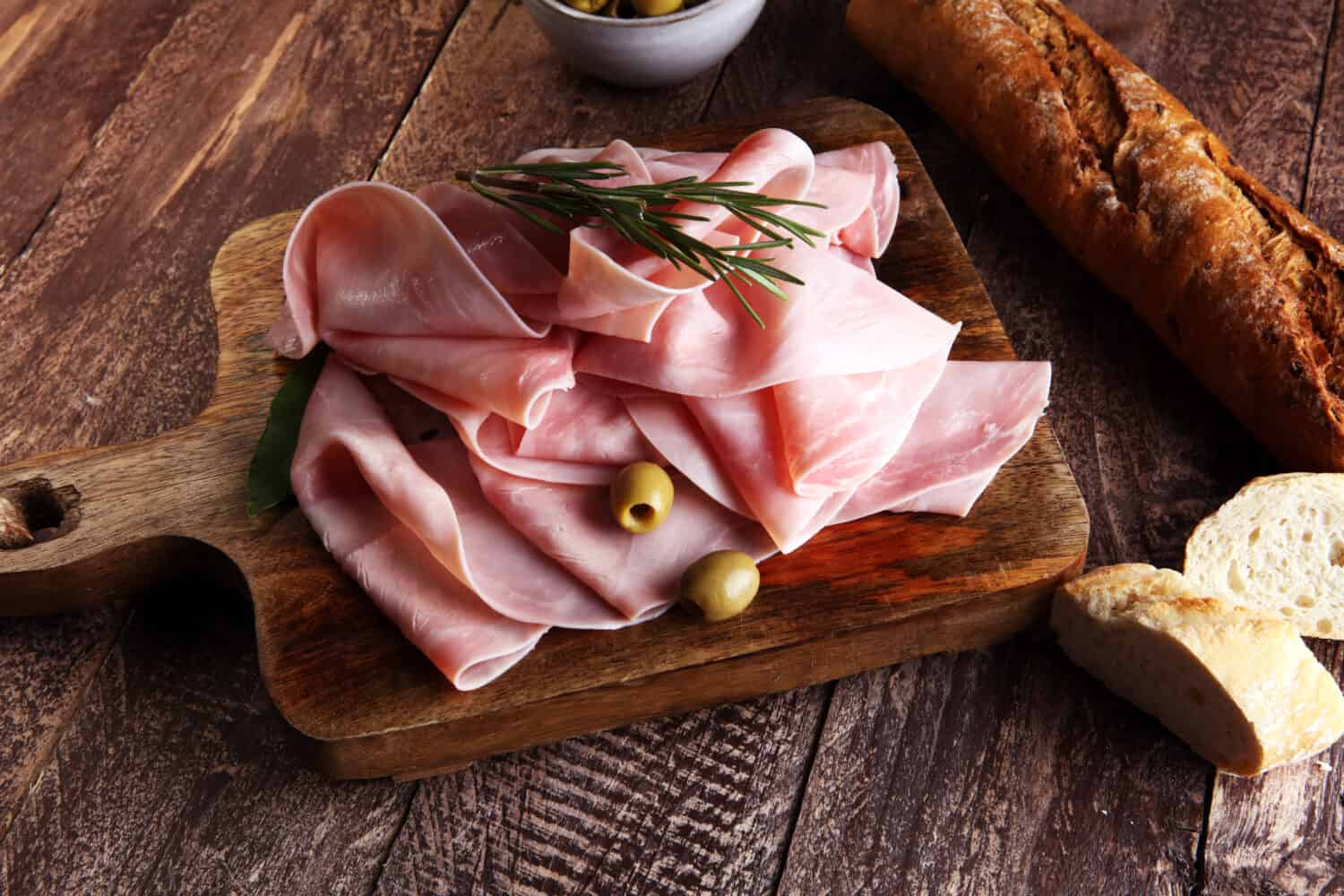
Ham is a versatile type of meat that can be used in a variety of recipes.
©beats1/Shutterstock.com
What is Pork?
Pork is meat that comes from a domesticated pig. It's very popular worldwide and comes in many variations for different dishes. You can buy pork meat in the form of ham, sausages, pork chops, bacon, pork ribs, pork steak, etc. Pork cuts come from various pig parts; thus, each has exclusive characteristics and usages. Some common pork cuts are; shoulder, loin, ribs, belly, sausage, and ham. All these cuts explain the versatility of pork since you can prepare all of them differently.
Ways to Serve Pork
The mild flavor of pork makes it very attractive as you can tweak it into something else. It works well with different seasonings hence suitable for many recipes. Some great pork servings include;
- The must-have convenient reference guide for every home cook!
- Includes more than 8,000 substitutions for ingredients, cookware, and techniques.
- Save time and money on by avoiding trips to grab that "missing" ingredient you don't really need.
Grilled pork chops
Grilling is one of the easiest ways to serve pork. Marinate the meat in your best marinade for approximately 30 minutes to bring out the flavors. Then, grill on medium-high heat at 145ºF.
Roasted pork cuts
Roasted pork can be the loin or shoulder. Apply your spice mixture and rub it in before roasting in a 145ºF temperature oven. Once done, let it rest, then slice accordingly.
Pulled pork
Pulled pork is standard in barbecue settings. The chef slow-cooks the pork in a smoker or pot until tender. While in this state, the pork quickly falls off the bone, and shredding is fast. You can serve it on buns and add coleslaw and barbecue sauce.
Other pork serving ideas are pork tacos, pork and bean soup, pork chops with sauce, pork fried rice, and many other pork dishes.
Ham vs. Pork: Can You Interchange Them?
Considering ham and pork come from pigs, it's impossible to interchange them. They have varying flavors, tastes, and textures, which can interfere with unique dishes. Ham is soft, salty, and smoky, while pork is drier and chewy with a mild taste. Also, ham is quite limiting in cooking methods, unlike pork, where various are ideal.
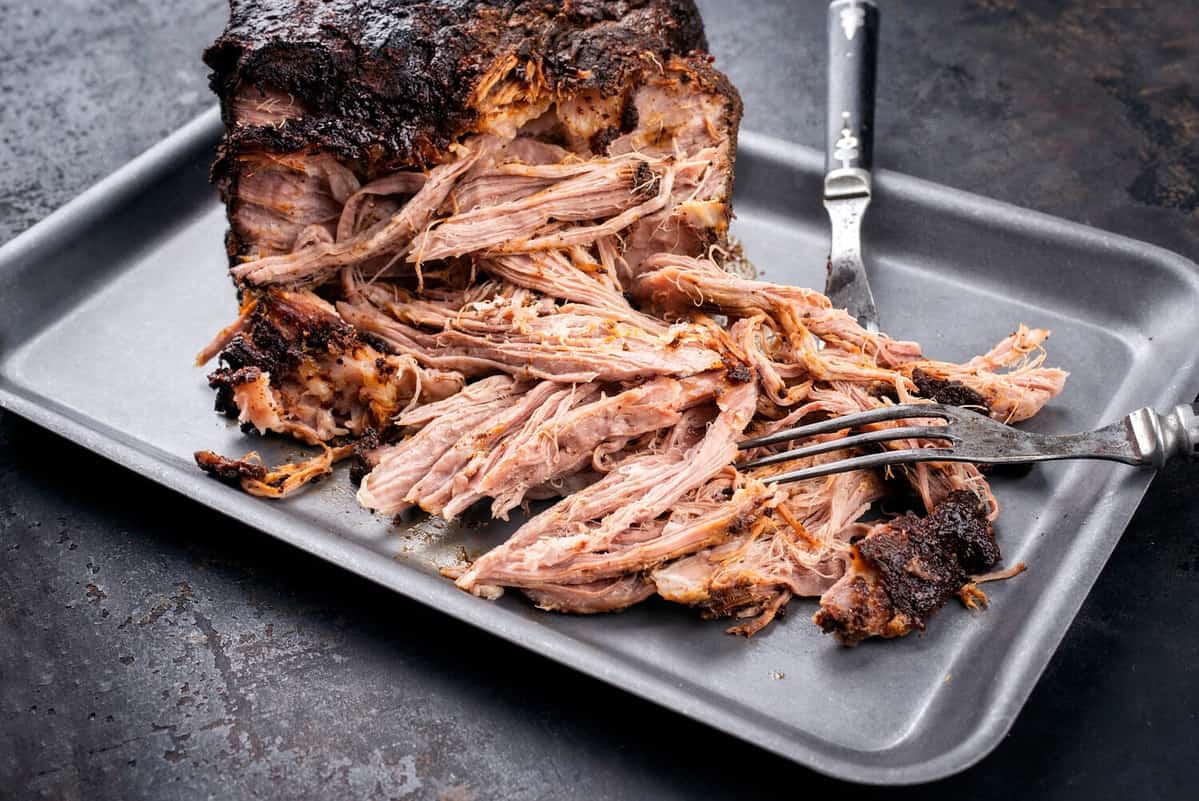
Boston butt is excellent for barbeque pulled pork because it shreds very easily and is tender.
©hlphoto/Shutterstock.com
Conclusion
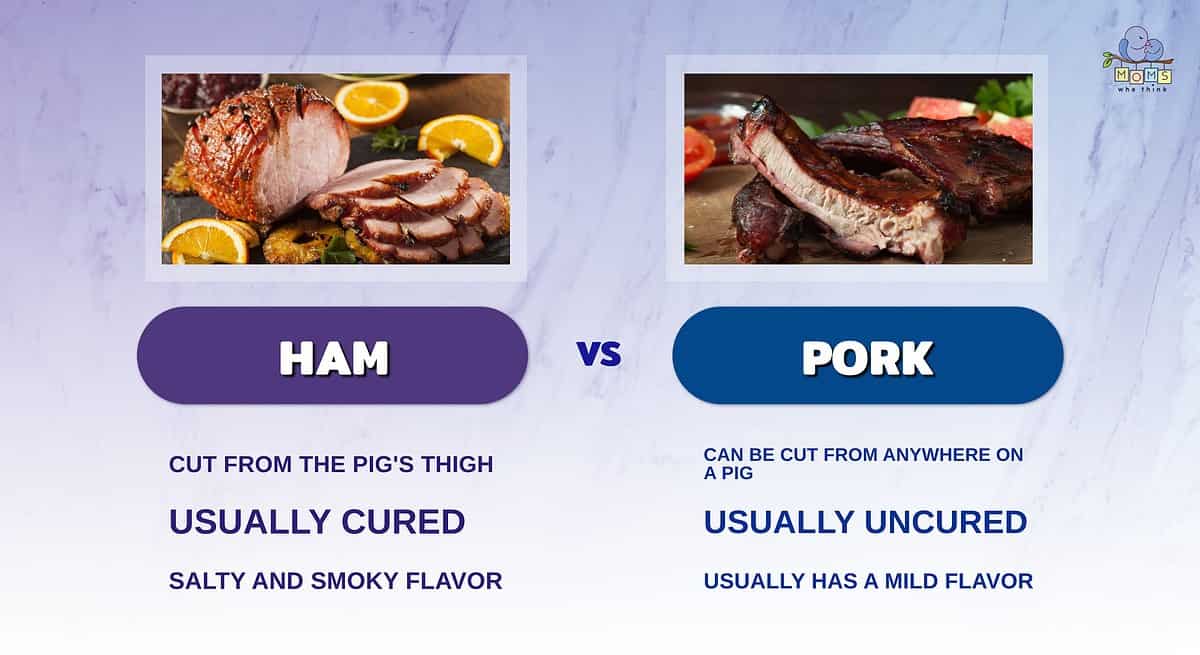
- Ham is a specific cut of meat, coming from the thigh of a pig. Meanwhile, pork can be cut from anywhere on a domesticated pig.
- Pork is almost always uncured, meaning that it needs to be cooked prior to consumption. Ham is usually cured.
- Due to the curing process, ham takes on a salty and smoky flavor. Pork generally has a mild flavor, with the more fatty cuts being more flavorful.
Pork and ham cuts are similar yet diverse. While their nutritional content is almost alike, pork is more versatile than ham. Its preparation methods are many, and it allows you to use several seasonings and spices to build up the flavor. However, ham is much softer, and few recipes can still work with it.
Print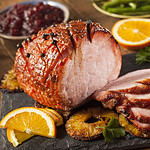
Spiced Pineapple Ham
Ingredients
1 cup unsweetened pineapple juice
¼ teaspoon ground cloves
2 teaspoons ground cinnamon
¼ cup dark brown sugar
1 Tablespoon cornstarch
3 Tablespoons apple juice
1 cup unsweetened crushed pineapple, drained
6 boneless fully cooked ham steaks (4 ounces each)
Instructions
1. In a saucepan, bring pineapple juice, cloves and cinnamon to a boil.
2. Reduce heat to low; cook, uncovered, for 5 minutes.
3. In a bowl, whisk together the brown sugar and cornstarch; stir in apple juice until smooth.
4. Stir into spiced pineapple juice mixture. Bring to a boil; cook and stir for 2 minutes or until thickened.
5. Stir in pineapple; heat through.
6. In a large nonstick frying pan, cook ham steaks until browned and heated through. Serve with the pineapple sauce evenly spooned over top of steaks. Serve over rice.
